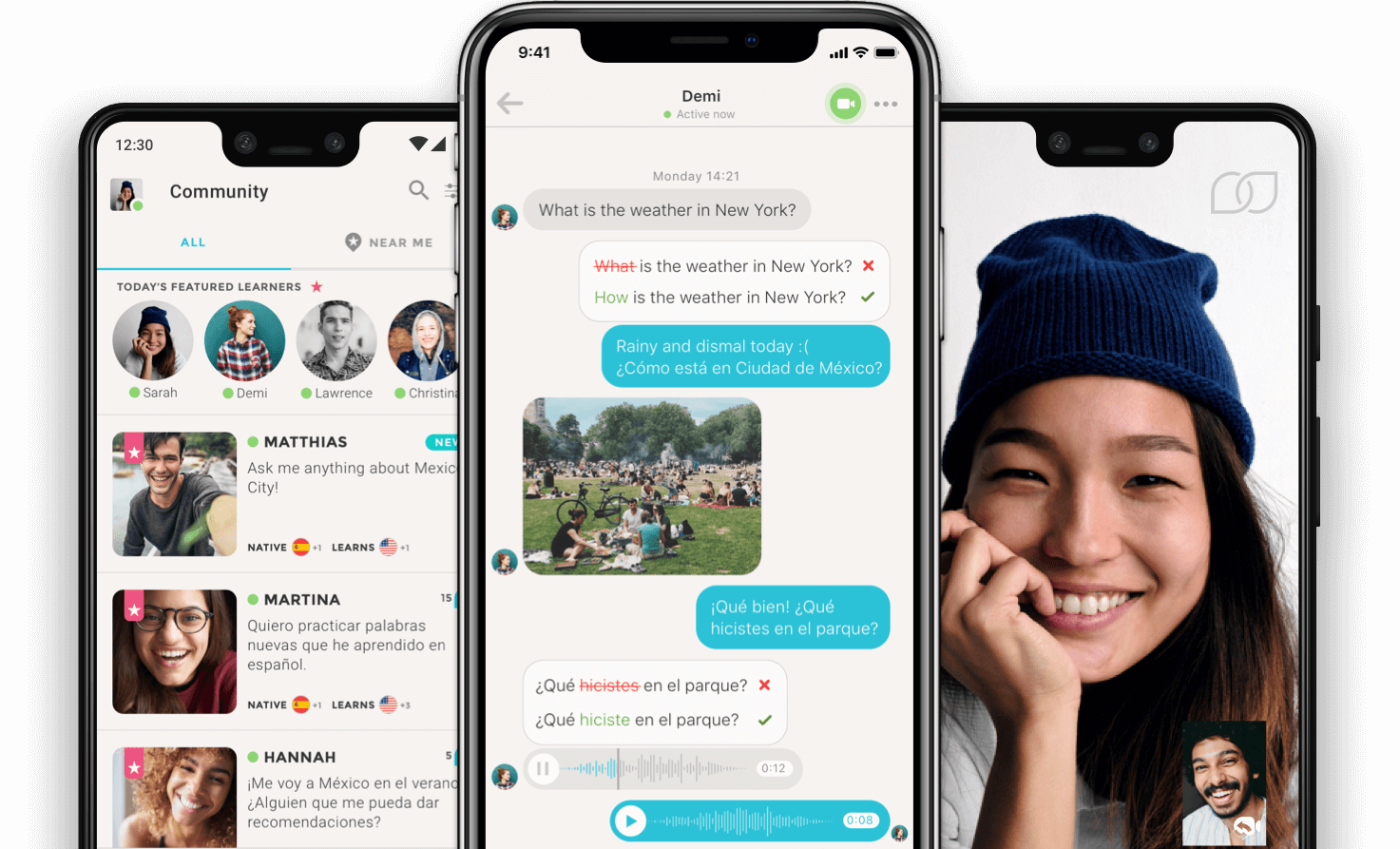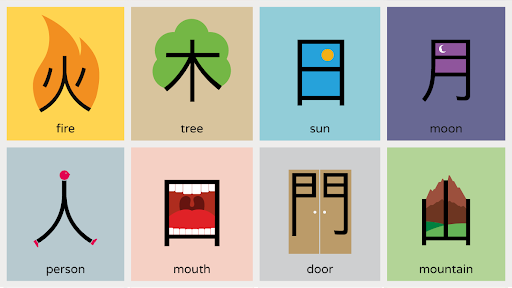July 2021
Group: Tatiana Bohsali, Maria Shuttleworth
Group: Tatiana Bohsali, Maria Shuttleworth
Upon equipping ourselves with relevant theory, we needed to get closer to creating and coming up with ideas. To do so, we needed to familiarise ourselves with the existing channels of language learning in more depth. In today's day and age, it makes sense for most of these methods to be in digital format such as apps since it’s what people use the most. We found a lot (if not all) of mobile applications that aim to aid people on their journey to learn a new language. Upon analysis, we identified 4 key categories that these applications could be divided into based on their teaching styles and features: Language courses, Flashcards and SRS, Gamified Platforms and Social, Chatting & Listening. We then formed it into a diagram below.

Market research diagram. Created by me.
Each of these categories works in different ways and provide different kinds of language learning experiences to people.
Social, Chatting & Listening apps, such as Tandem, give you the opportunity to learn how to speak the language through actually talking. It connects people who want to learn a language with native speakers and allows communication through text, voice and video chats. This provides an amazing opportunity to actually practice the language. However, it is often that similar platforms intended for language learning are not controlled or restricted to just that in any way, and therefore, could also be used just as another form of social media.

Tandem app. Image taken from an online source.
Flashcards and SRS is a category that is not limited to language learning, however, a lot of people use them to create flashcards with words on one side and translation at the back to practice and memorise vocabulary. The good thing about them is that most of these platforms, such as Quizlet make it fully customisable and people can create their flashcards from scratch and add to them both text and images which gives them freedom. We also found Chineasy which uses illustrated flashcards that place Chinese characters within an image which helps people to remember better.

Chineasy app. Image taken from an online source.
Duolingo is one of the most well-known apps on the market and falls into both categories: language courses and gamified platforms. The app provides short themed lessons that allow users to listen to the pronunciation, read, form phrases by ordering words, match illustrations to words, etc. It also uses different gamification elements such as badges, experience points, skill levels, etc. in order to keep the user motivated to learn. Although it is a great tool to use as a starting point, it really lacks depth and fails to consider real-life situations and contexts where people would actually need the language skills. It is very unlikely that anyone would ever need to say "I love apples" in different languages. Unless they REALLY love apples.

Duolingo app. Image taken from an online source.
Upon exploring all of the existing applications, I realised that although we studied their many features and possibilities, it is still unclear how people use them. Most importantly who uses them, when and where. What do people like about them? What would they change? Furthermore, as previously mentioned I was particularly interested in studying how motivation levels vary in people depending on the language learning methods they use. Therefore, I suggested that we conduct our own study into this...
BIBLIOGRAPHY
Duolingo. (2015). Learn a language for free. [online] Available at: https://www.duolingo.com/learn [Accessed 12 Nov. 2021].
Tandem - Speak Any Language. (2021). Tandem Language Exchange App | Find Conversation Exchange Partners. [online] Available at: https://www.tandem.net/ [Accessed 12 Nov. 2021].
Chineasy.com. (2021). Chineasy | Award-Winning Chinese Learning Methodology. [online] Available at: https://www.chineasy.com/ [Accessed 12 Nov. 2021].
IMAGES:
Tandem app
https://images.ctfassets.net/0uov5tlk8deu/3GR4hBsHFsspGS7zgqWOxc/c25aeb107cfd47a2a5edf1cb16e0d44f/app_preview_EN_1.5.png
https://images.ctfassets.net/0uov5tlk8deu/3GR4hBsHFsspGS7zgqWOxc/c25aeb107cfd47a2a5edf1cb16e0d44f/app_preview_EN_1.5.png
Duolingo app
https://www.pittsburghmagazine.com/content/uploads/2020/03/Duolingo.jpeg
https://www.pittsburghmagazine.com/content/uploads/2020/03/Duolingo.jpeg
Chineasy
https://lh3.googleusercontent.com/proxy/rPRTmrLUa0n72ZY6d8Um-L7Vl1w2VWhJAbEbuWWYgYlLzZdYfB1NJSdTZRtR7nSvjYtMY8--emzLTupIUtLY2MX7reWD7csndk5RBvt-EWRdlt0WZPSatbsC60Y
https://lh3.googleusercontent.com/proxy/rPRTmrLUa0n72ZY6d8Um-L7Vl1w2VWhJAbEbuWWYgYlLzZdYfB1NJSdTZRtR7nSvjYtMY8--emzLTupIUtLY2MX7reWD7csndk5RBvt-EWRdlt0WZPSatbsC60Y